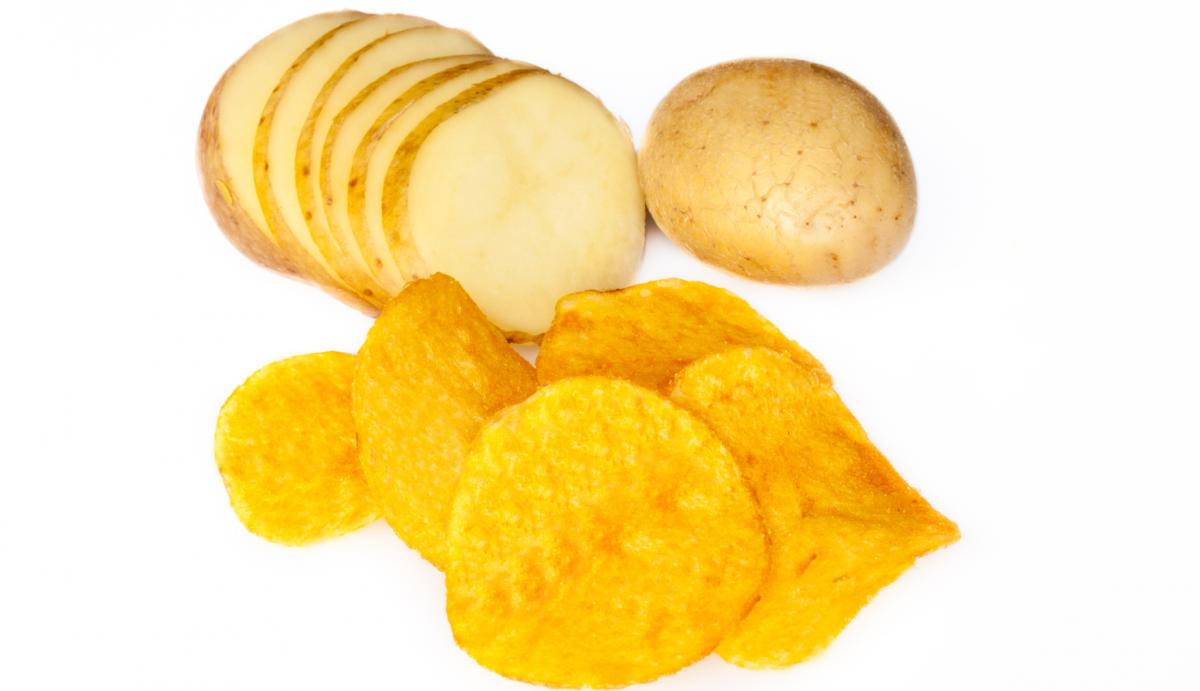AMAZINGLY there are so many shapes, textures and sizes as well as flavors of potato snacks to choose from these days. Thanks to the number of processing methods available, manufacturers have the option to produce just as many as they want, and even change formulas.
Fabricated chips
The fabricated potato chip starts with a potato-based dough that is made from potato starch, potato flakes, potato granules, potato flour or ground potatoes. Like a sheet of cookies, potato dough is rolled out and cut into uniform shapes. Thermo-processing follows with a combination of baking and drying, depending on the specific product. The final processing step before packaging is seasoning with a powder spray of flavoring.
According to Bühler Aeroglide, which has been supporting potato snack manufacturers with its processing solutions, the AeroDry™ Impingement Oven for pre-drying/baking, and the AeroDry™ Multiple Pass conveyor dryer for gentle, final drying to packaging moisture, work in these applications.
Extruded direct expanded snacks
Puffy extruded direct expanded (DX) snacks can be made into various shapes, sizes, textures and coatings. For this, potato flour can be mixed with corn flour or other ingredients that will inflate the product in the extrusion process.
The role of corn flour is to trigger the expansion properties that process snacks like potato sticks while still using a percentage of potato skin in the finished product. A twin screw extruder, a thermo-mechanical cooker, conveys and cooks the product according to several adjustable parameters that achieve the preferred form, texture, density and mouth-feel characteristics. In the case of potato sticks, cooked product is extruded through a die in ropes which is then cut into desired lengths downstream.
After extrusion and cutting, DX snacks are conveyed to the baking/drying process that often utilizes a conveyor convection dryer. The product is typically robust, and product depths up to 100 mm to 150 mm can be used without significant attrition of the product. Moisture in the baking/drying process is typically in the range of 10% to 12%. Finished moisture is 2% or less, depending on the location and equilibrium moisture content in a region.
The AeroDry™ Single Pass conveyor drying/baking system is designed for these products. The AeroDry™ conveyor system is available in varying conveyor widths and zone lengths for custom adaptation for desired capacities. These systems do not usually include cooling prior to the seasoning step.
Dried DX snacks are then seasoned, in many cases in a flighted rotary drum, with a dry seasoning applicator system. Some processors add a light application of oil in the seasoning process, but DX snacks should still be hot from the baking/drying process to promote better oil absorption.

Photo: Potato chips © Irinaroibu | Dreamstime.com
Half product pellets
Snack pellets, also known as half products or third-generation snack products, are unexpanded products that become finished snacks after expansion, either through exposure to hot air or by frying. They are largely used in the savory snacks industry, which includes chips and puffs. Potato snack pellets are the most widely produced and consumed, followed by corn snack pellets, and they’re available in a variety of forms, shapes, textures, and flavors. This is a growing market projected to exceed $7 billion globally by 2019, according to Research and Markets.
Dried pellets with 12% moisture are stable for storage and shipment, and volume is much less than expanded pellets. Many producers package pellets in 50 kg bags that are sold to retail outlets where expansion is achieved through frying or hot air, and then seasoned. In addition, some processors have continuous lines with expansion, seasoning and packaging immediately following drying.
The major production techniques include:
- Direct extrusion through a die and cutter;
- Sheet extrusion, cutting, pre-drying, finish drying; and
- Rod forming, curing, cutting, and drying.
Pellet half-products are manufactured using a twin screw extruder to cook the raw material which is then transferred continuously to a former unit to cool and then form the desired shape in the die. The shapes may include designs such as wheels, tubes and rings. The die-face cutter cuts the pellet into the individually-shaped pieces. Another option is to extrude a continuous sheet that can be stamped downstream to generate textured chip products.
Because directly extruded pellets can leave the cutter sticky, a pre-drying step is often necessary, and this incorporates a shaker pre-dryer before entering the finish dryer. Finish dryers are most often multiple pass to reduce the footprint for drying times, that can range from one hour to six hours. The primary reason for long drying times is that moisture migration to the surface of the pellets is diffusion limited. Modest temperatures prevent stress cracking which can result after the pellets are expanded. Elevated humidity in the drying air can be used to retard the evaporation rate at the surface and heat the center of the pellet to promote diffusion of the moisture to the surface. Pellets produced from extruded sheets process similar to directly extruded pellets, but they can have sticky characteristics. But pellets produced from formed rods, which have been cured, do not have this problem. This is because the starch can retrograde during the curing process. These pellets can be introduced to the finish dryer.
Buhler Aeroglide provides AeroDry Multiple Pass drying and cooling systems for these products. Cooling is required to prevent the pellets from “sweating” when put into bulk packaging. Buhler Aeroglide also provides the AeroExpander™ for hot air expansion of the pellets, for processors that wish to produce a healthier snack than oil frying yields.
So, next time you think potatoes, consider the many ways you can shape, texturize and flavor them easily using the right equipment.
ADIDAS













